Sled dogs are some of the most impressive furry friends out there! Their entire lives are dedicated to their sport, and they complete journeys that many of us could never imagine. And as if their skills were not impressive enough, they manage to look absolutely majestic each step of the way.
So, what exactly is a sled dog, and what are some of the most popular sled dog breeds? We dive into everything you need to know below!
What Is a Sled Dog Anyways?
Many of us have seen photos of dog teams trekking through the snow. But you may not be aware of the details behind this canine occupation.
Sled dogs have been utilized in Arctic parts of the world for thousands of years. They originated during a time when snowmobiles and vehicles did not exist. Locals in the area had to get creative with how they transported materials. They soon learned that they could train dogs to work in unison to pull materials on a sled, and this is how the first sled dogs were born!
These dogs were used to haul mail and building material for nearby villages. They were even utilized during the gold rush period. As the years went on and multiple regions began to utilize sled dogs, they even began to train them for different specialties. These included freight dogs that pulled heavy loads, sprint dogs that could pull sleds quickly, and long-distance dogs that could participate in long journeys.
Though we now have vehicles to transport supplies in arctic regions, some rural communities still rely on sled dogs.
Do Sled Dogs Still Exist Today?
The countries in which sled dogs are still utilized include Russia, Antarctica, Siberia, Greenland, Sweden, and even parts of Alaska. Additionally, there are a few types of sled dog recreations, including racing events and tours around artic regions.
Because many people are interested in the work of sled dogs, you can now arrange tours to get up close to these incredible pups. Some of the countries that host these tours include Canada, Norway, the United States, and Greenland. You might even be able to go on an extended sled dog adventure!
Now that you know a bit about sled dogs, let’s introduce you to five of our favorite sled dog breeds!
The Popular Alaskan Husky
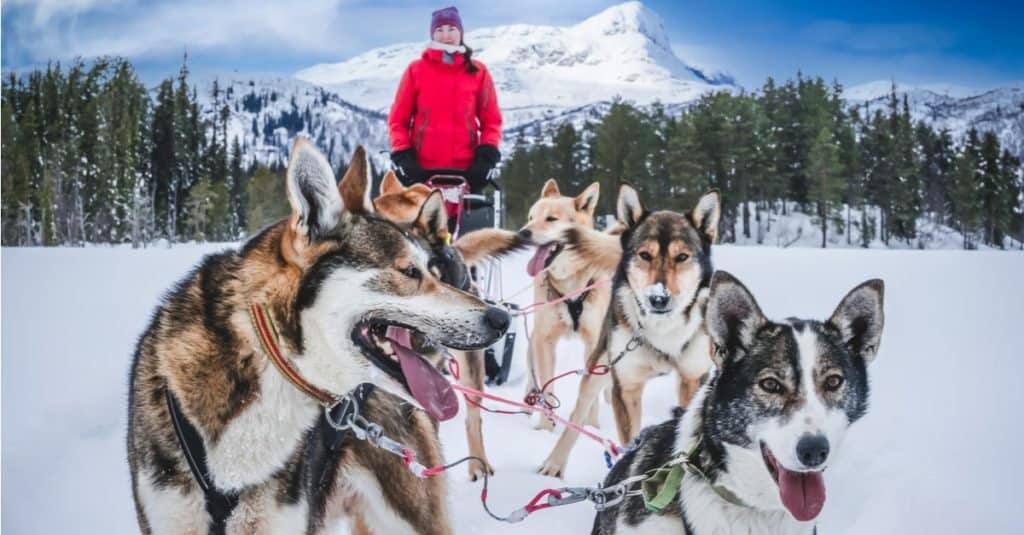
These pups are most often used for sled dog racing, but they are sometimes utilized for transport tasks as well.
©iStock.com/HenrikNorway
Many are familiar with the Siberian husky, but did you know there is an Alaskan Husky as well? These impressive dogs are a mix of many Nordic dog breeds and were specifically bred to be powerful arctic working dogs. These pups are most often used for sled racing, but they are sometimes utilized for transport tasks as well. The Alaskan husky is often a bit beefier than the Siberian husky, as they typically weigh anywhere from 60-80 pounds.
The Powerful Alaskan Malamute
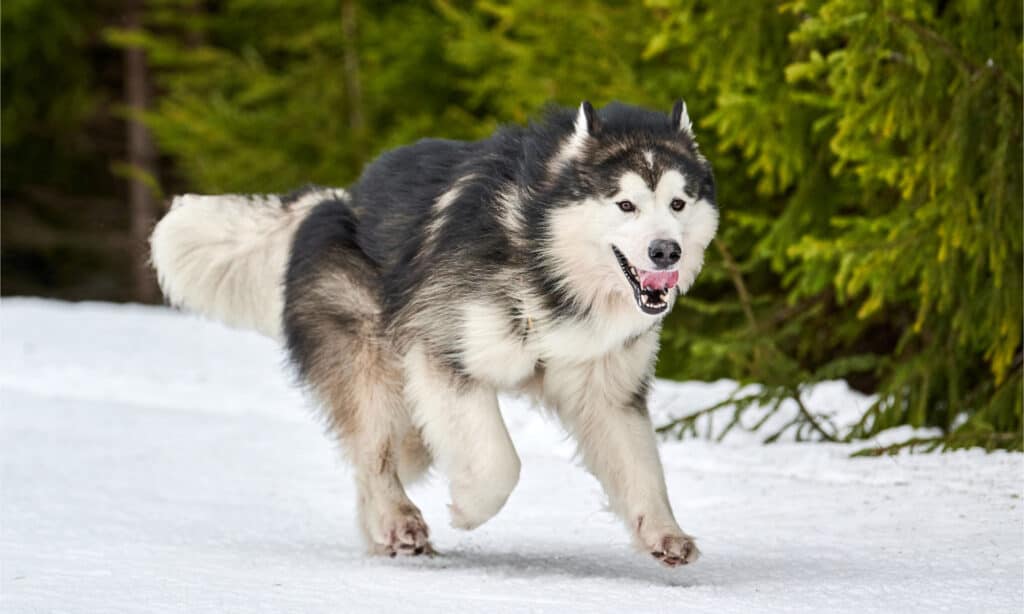
Alaskan Malamutes were bred to pull heavy freights in arctic regions.
©travelarium.ph/Shutterstock.com
The Alaskan Malamute is often confused with the husky, but these two have obvious size differences. The Alaskan Malamute was bred for speed, agility, and to be powerful enough to pull heavy sleds for long distances. These pups were mainly used to pull heavy freights. However, they were also the main dogs used in World War II for messenger and hauling work. Unlike their husky friends, the Alaskan Malamutes can weigh anywhere from 80 to 100 pounds.
The Treasured Canadian Eskimo Dog
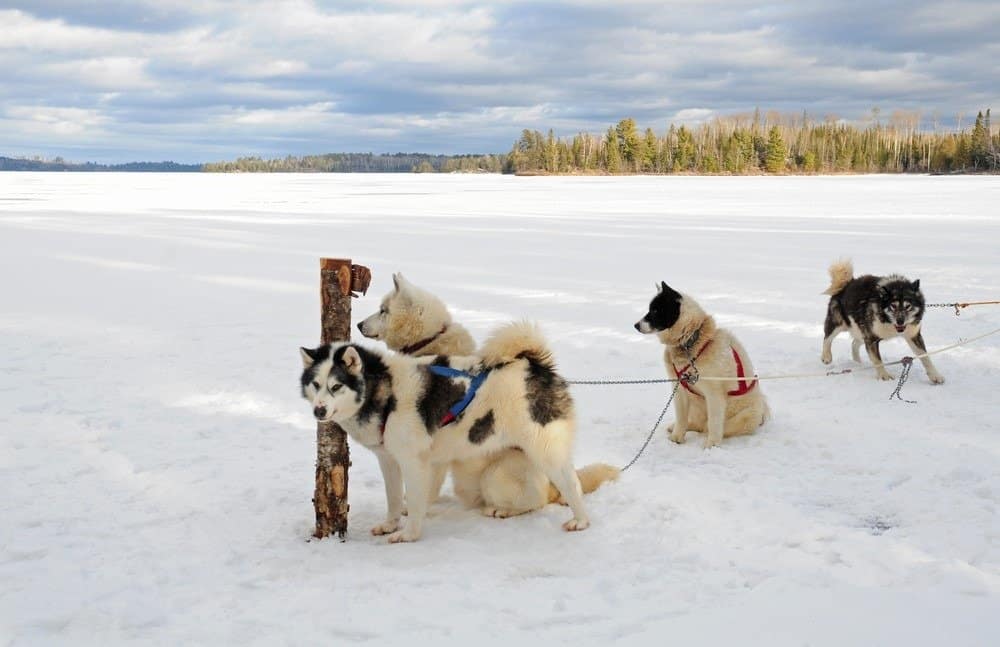
The Canadian Eskimo dog is one of the most well-known sled dogs used by native tribes in Canada.
©Nancy Bauer/Shutterstock.com
The Canadian Eskimo dog is one of the most well-known sled dogs used by native tribes in Canada. These pups were bred to pull heavy weights for long distances, but they were also used for hunting purposes. They helped their humans catch seals, ox, and even polar bears! Though you’d think they would need to be massive to hunt such large animals, they only reach about 60 pounds.
The Beloved Greenland Dog
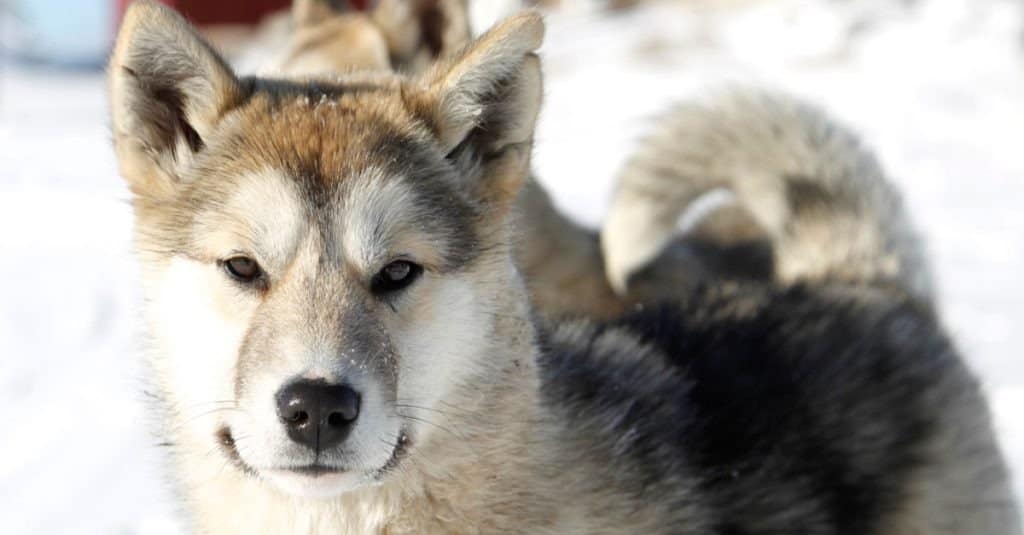
Many Greenland dogs are now used for sled dog adventures.
©Chris Christophersen/Shutterstock.com
While the Greenland dog is genetically similar to the Canadian Eskimo dog, many people still consider them different dog breeds. They are incredibly strong and carrying heavy loads, but they are not as speedy as other sled dogs. This is why most Greenland dogs are now used for those offering sled dog adventures to tourists. Like the Canadian Eskimo dog, they are known to reach about 60 pounds.
The Powerful Chinook Dog

The Chinook is a powerful American sled dog.
©Igor Plotnikov/Shutterstock.com
The Chinook is an American sled dog that was originally created during the gold rush period. They were first developed in the 1900s in New Hampshire. They are a powerful mix of the Greenland dog, the English mastiff, the German shepherd, and the Belgium shepherd. With a breed combination like that, you can only imagine how powerful these canine friends are! These sled dogs have been known to reach 80-90 pounds.
The Rare Labrador Husky
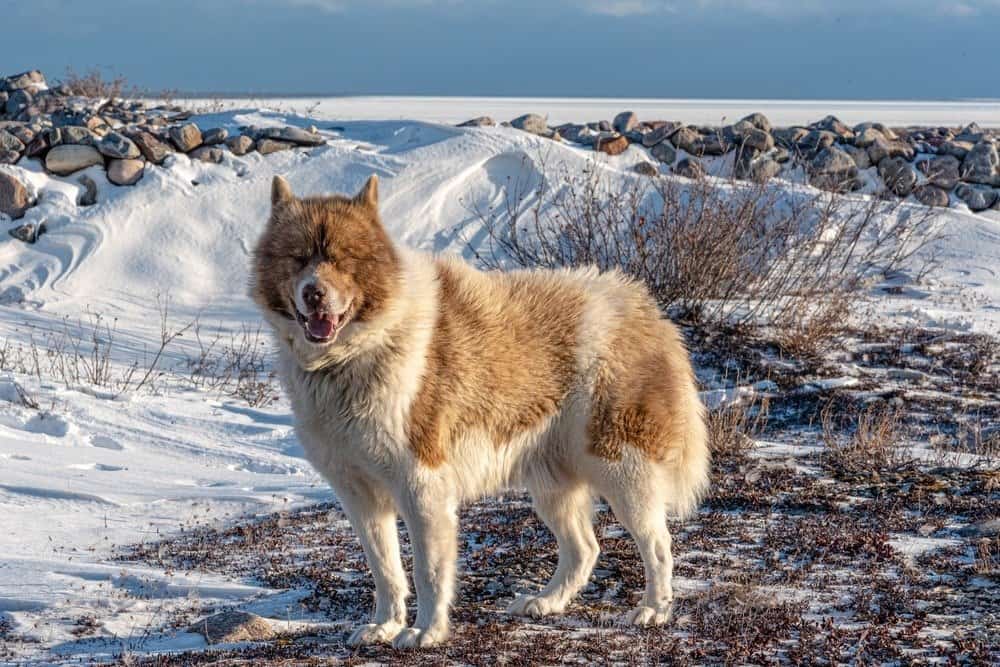
Canadian dogs from the Labrador region were believed to have been bred with wolves.
©Scalia Media/Shutterstock.com
It may seem like the Labrador husky is a cross between the Siberian husky and a Labrador retriever. However, this is not the case. The Labrador name comes from the Labrador region in Canada and does not refer to their breed makeup at all. The Labrador husky is believed to have been created when husky-like dogs were brought to the region of Labrador and bred with wolves. These pups can be anywhere from 60 to 110 pounds on average, so they can vary greatly based on their genetics.
Final Thoughts
The breeds we discussed above are some of our favorite powerful pups to have roamed the arctic lands. These incredible canine friends were used to transport supplies, send mail across arctic lands, and even assist their humans in hunts. Their legacy throughout history is impressive, and there’s no denying how important they were to human survival.
They may not be the main source of transportation in arctic regions any longer, but they are still relied on heavily by some rural communities. You can even visit sled dogs in certain chilly parts of the world.
The photo featured at the top of this post is © iStock.com/Jeff Manes
Ready to discover the top 10 cutest dog breeds in the entire world?
How about the fastest dogs, the largest dogs and those that are -- quite frankly -- just the kindest dogs on the planet? Each day, AZ Animals sends out lists just like this to our thousands of email subscribers. And the best part? It's FREE. Join today by entering your email below.
Thank you for reading! Have some feedback for us? Contact the AZ Animals editorial team.






